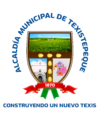Texistepeque facts for kids
Quick facts for kids
Texistepeque
|
||
|---|---|---|
|
Municipality
|
||
|
||
| Country | ||
| Department | Santa Ana | |
| Area | ||
| • Municipality | 69.10 sq mi (178.97 km2) | |
| Elevation | 1,329 ft (405 m) | |
| Population | ||
| • Municipality | 17,923 | |
Texistepeque is a city and a municipality located in the western part of El Salvador. It is found in the center of the Santa Ana department. The city is north of Santa Ana and south of Metapán.
Long ago, the Poqomam Maya founded Texistepeque. Later, the Pipil people from Cuzcatlan took control until the Spanish arrived. The name Texistepeque comes from the Pipil Nawat language. It means "place of eggs" or "mountain of eggs". This name comes from the Nawat words teksis (eggs) and tepet (mountain).
Contents
History of Texistepeque
The area around Texistepeque was first home to the Poqomam Maya people. Later, it became part of the lands ruled by the lords of Cuzcatlan. This continued until the Spanish conquest of El Salvador in the early 1500s.
After El Salvador became independent from Spain in 1821, Texistepeque was part of the Sonsonate Department. In 1855, the Sonsonate department was divided. Texistepeque then became part of the newly formed Santa Ana department.
The Church of Texistepeque
The main church in Texistepeque is located in the city itself. You can find it on the highway that goes towards Metapán, about 17 kilometers north of Santa Ana. No one knows for sure who built it, but it was likely constructed in the 1700s.
The church has a Baroque style. This means it has a fancy front (facade) with many decorations. The front is divided into three parts and has half-columns and arched spaces for statues. The top part is decorated with swirls and pointy towers. It also has a small shrine that holds a clock.
The bell towers are built into the front of the church. They were added later. The sides of the church have supporting columns and decorations. The roof today is made of iron sheets, but it used to be made of wood and tiles.
Inside the church, there is one large open space with ten wooden columns. These columns are made from single tree trunks and have stone bases. The ceiling inside is made of wood. Some parts of the original Mudejar style ceiling (a mix of Christian and Islamic art styles) are still there.
Records from the 1700s show that the people of San Esteban-Texistepeque asked for money to finish rebuilding their town in 1743. In 1755, they received money to help rebuild the church.
Culture and Traditions
The main saint of Texistepeque is Saint Stephen. Festivals honoring him are held every year from December 17 to December 27. The Virgin of Belen-Güijat is also celebrated during this time.
The town is famous for its Talcigüines. These are local people who dress up as demons and carry whips. At the start of Holy Week, they playfully whip residents in the streets. This tradition shows the mix of cultures in the city, combining Catholic Spanish and Indigenous influences.
Texistepeque also has a professional football (soccer) club called C.D. Titán. They currently play in the Salvadoran Second Division, which is the second-highest league in El Salvador.
Local Government and Divisions
The total population of Texistepeque municipality is 17,923 people. The mayor, also called alcalde, as of 2018, is José Dimas Aguilar Mejía. He is from the National Coalition Party (El Salvador).
The municipality is divided into six smaller areas called Cantones. These are like small districts within the municipality.
The six Cantones are:
- Canton Costa Rica
- Canton Cujucuyo
- Canton Chilcuyo
- Canton El Jute
- Canton San Miguel
- Canton Santo Tomás
The local church that serves the municipality is called the Parish of San Esteban, Texistepeque.
Geography and Location
Texistepeque is located 405 meters (about 1,329 feet) above sea level. The municipality covers an area of 178.97 square kilometers (about 69.09 square miles).
The Lempa River flows along the eastern edge of the municipality. This river also forms the border between Texistepeque and the Chalatenango Department.
See also
 In Spanish: Texistepeque para niños
In Spanish: Texistepeque para niños



